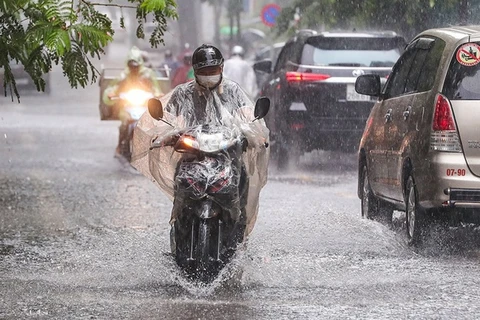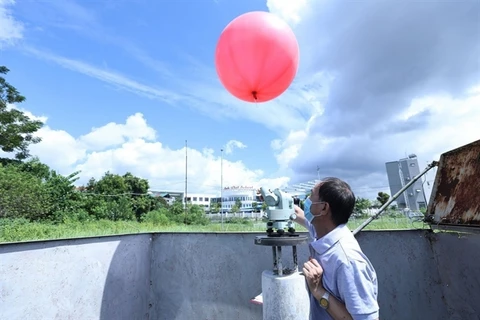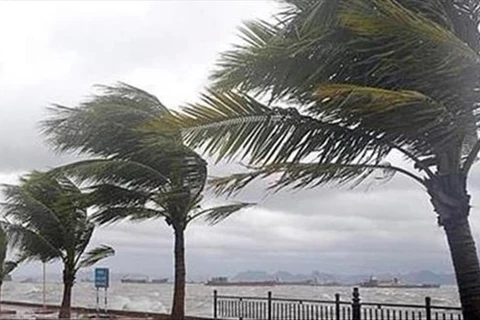Hanoi (VNS/VNA) - Two to four severe weather systems are predicted to directly affect Vietnam from now to the end of the year, according to the National Centre for Hydrometeorological Forecasting (NCHMF).
The country should be prepared for storms and heavy rains in central areas before the end of 2022, Hoang Phuc Lam, deputy director of the NCHMF, said, adding that there is also a chance that tropical cyclones will appear in January 2023.
Talking about other dangerous phenomena, Lam said that in the north, the volume and flow of rivers will decline from October. This will lead to a water shortage in rivers and reservoirs compared to the yearly average.
People near river areas in the central region should stay vigilant as two to three floods are predicted to occur.
In the south central region from Quang Binh to Binh Thuan provinces and the Central Highlands, the threat of flood is higher, with the hydrograph peak here from Level 2 to Level 3, or even higher. There are threats of flash floods and landslides in upstream areas and small creeks.
The volumetric flow rate of rivers in Thanh Hoa, Quang Binh to Quang Ngai, Binh Dinh, Khanh Hoa and southern Central Highlands areas is predicted to rise by 10-30% compared to averages.
Northern and north-central coastal areas should prepare for rising water due to storms in October, as well as rising tides and cyclones, and cold fronts reaching central areas.
To limit the damage of adverse natural events, the NCHMF advised authorities and regional standing committees for Natural Disaster Prevention and Control and Search and Rescue to closely monitor and update forecasts and warnings from the NCHMF.
These forecasts and warnings should be quickly sent to the public. In addition, methods of preventing natural disasters should also be communicated along with blocking activities in areas with high risks of flash floods and landslides.
People in affected areas should also follow the updates and forecasts of the NCHMF, as well as identify areas of high risk. They should also comply with local guidance on natural disaster prevention and prepare necessities in case of adverse natural events. /.
The country should be prepared for storms and heavy rains in central areas before the end of 2022, Hoang Phuc Lam, deputy director of the NCHMF, said, adding that there is also a chance that tropical cyclones will appear in January 2023.
Talking about other dangerous phenomena, Lam said that in the north, the volume and flow of rivers will decline from October. This will lead to a water shortage in rivers and reservoirs compared to the yearly average.
People near river areas in the central region should stay vigilant as two to three floods are predicted to occur.
In the south central region from Quang Binh to Binh Thuan provinces and the Central Highlands, the threat of flood is higher, with the hydrograph peak here from Level 2 to Level 3, or even higher. There are threats of flash floods and landslides in upstream areas and small creeks.
The volumetric flow rate of rivers in Thanh Hoa, Quang Binh to Quang Ngai, Binh Dinh, Khanh Hoa and southern Central Highlands areas is predicted to rise by 10-30% compared to averages.
Northern and north-central coastal areas should prepare for rising water due to storms in October, as well as rising tides and cyclones, and cold fronts reaching central areas.
To limit the damage of adverse natural events, the NCHMF advised authorities and regional standing committees for Natural Disaster Prevention and Control and Search and Rescue to closely monitor and update forecasts and warnings from the NCHMF.
These forecasts and warnings should be quickly sent to the public. In addition, methods of preventing natural disasters should also be communicated along with blocking activities in areas with high risks of flash floods and landslides.
People in affected areas should also follow the updates and forecasts of the NCHMF, as well as identify areas of high risk. They should also comply with local guidance on natural disaster prevention and prepare necessities in case of adverse natural events. /.
VNA
























